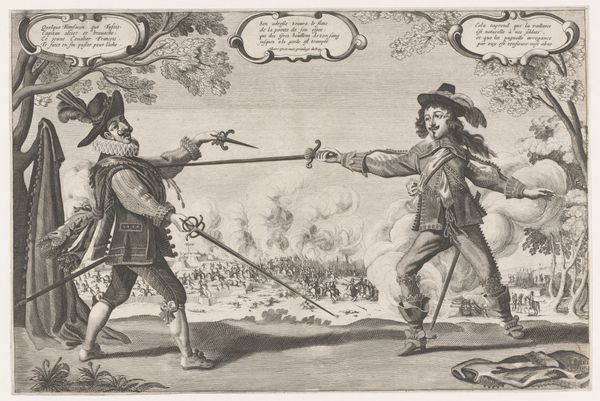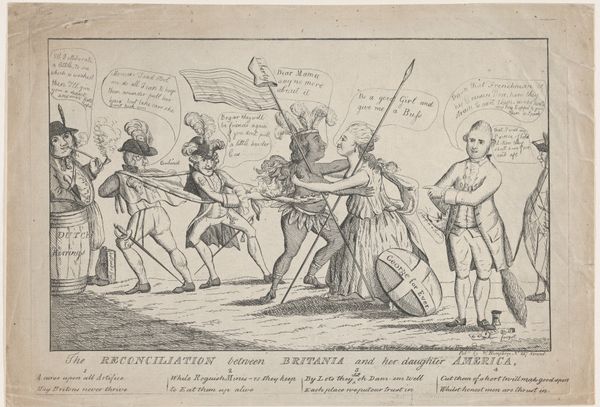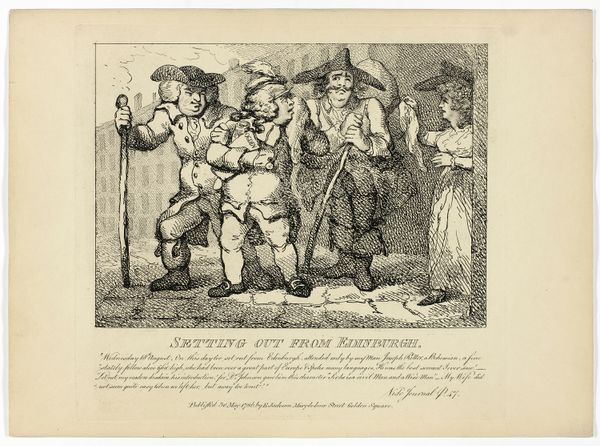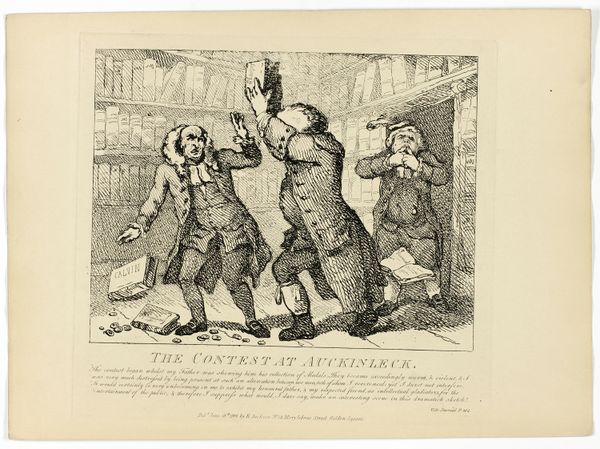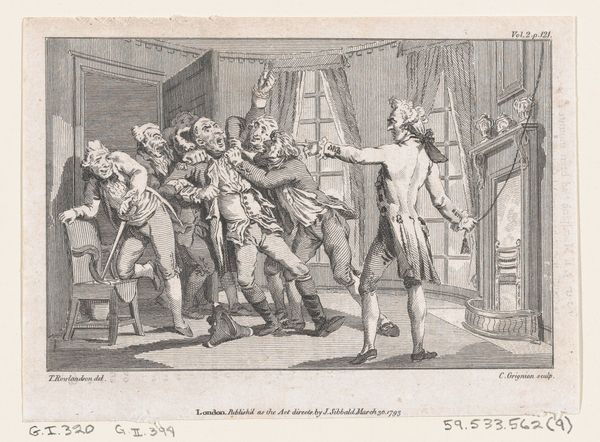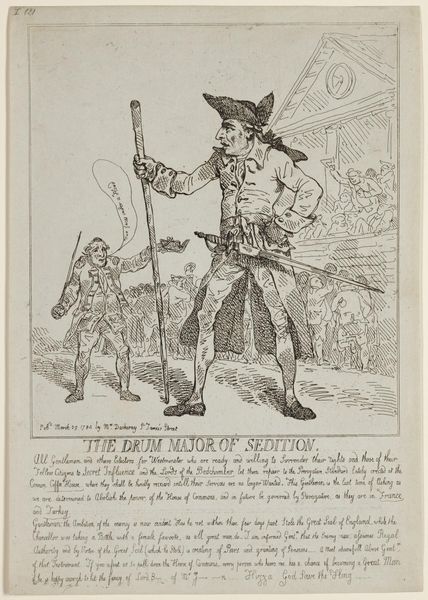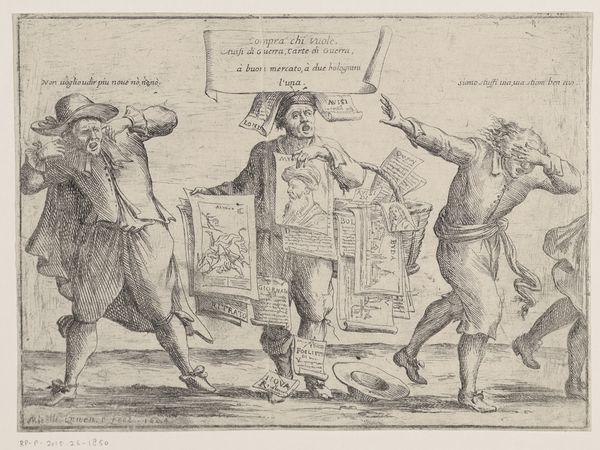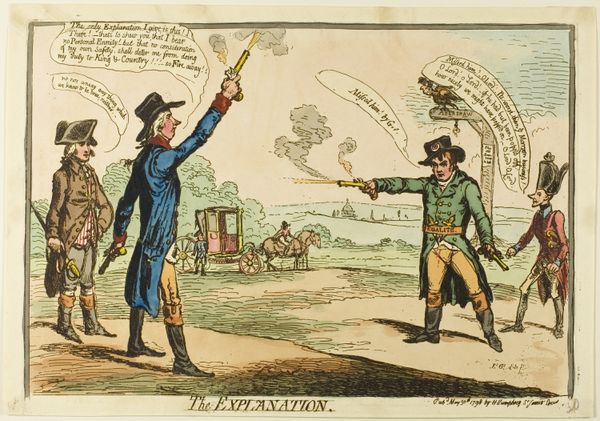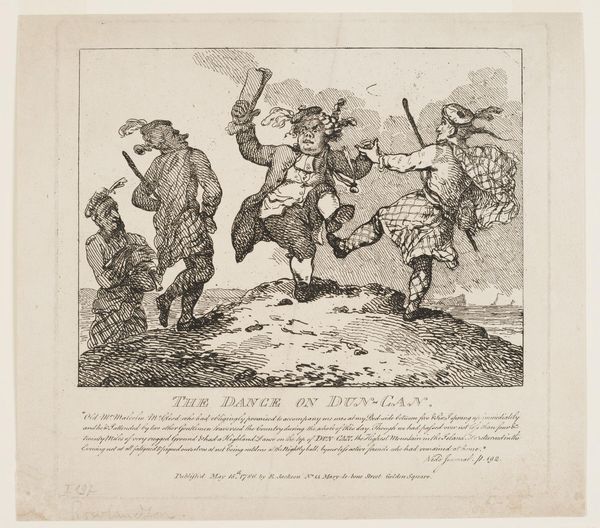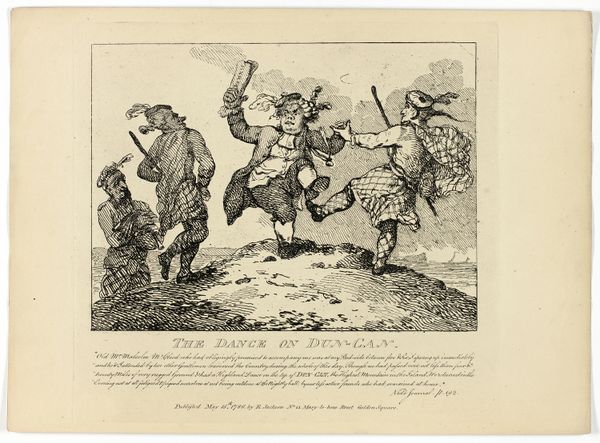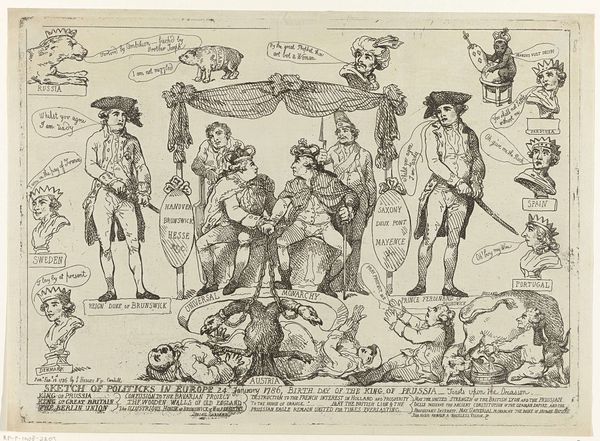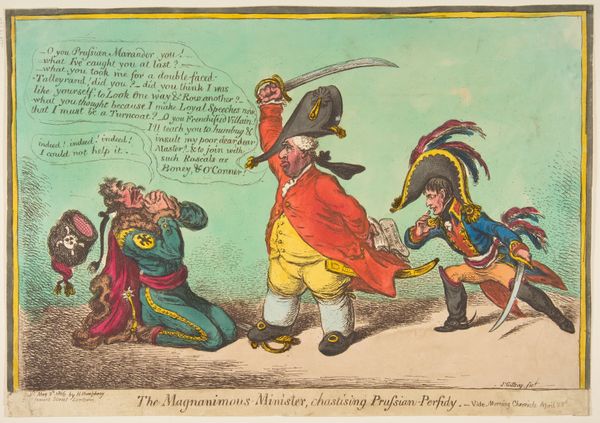
Dimensions: Plate: 21 Ã 32 cm (8 1/4 Ã 12 5/8 in.) Sheet: 24.8 Ã 17 cm (9 3/4 Ã 6 11/16 in.)
Copyright: CC0 1.0
Editor: So, here's "The Loss of Eden, - and Eden, Lost" by Thomas Rowlandson. It looks like an etching, and it definitely has a satirical feel to it. What historical context am I missing here? Curator: This piece speaks volumes about the political climate of the late 18th century, particularly Anglo-American relations. Consider the title, a clear reference to Paradise Lost. Rowlandson is drawing a parallel between the biblical expulsion from Eden and the loss of the American colonies. How does the visual language reinforce this comparison? Editor: Well, one figure holds a paper labeled "Liberty," while the other seems to be shouting the same word. Is this about the American Revolution? Curator: Precisely. It's a commentary on the concept of liberty and how it's being used—or perhaps misused—by both sides of the conflict. Think about the phrase "every man has his price" at the top. Who profits, and at whose expense? Editor: So it's a critique of both British and American motivations? Curator: Exactly! It suggests that the pursuit of liberty can be tainted by self-interest and political maneuvering. What do you make of the composition? Editor: I see... It's less about ideals and more about power dynamics. Thanks, that helps a lot! Curator: Indeed. By understanding these nuances, we can appreciate the complex layers of meaning embedded in Rowlandson's work.
Comments
No comments
Be the first to comment and join the conversation on the ultimate creative platform.
